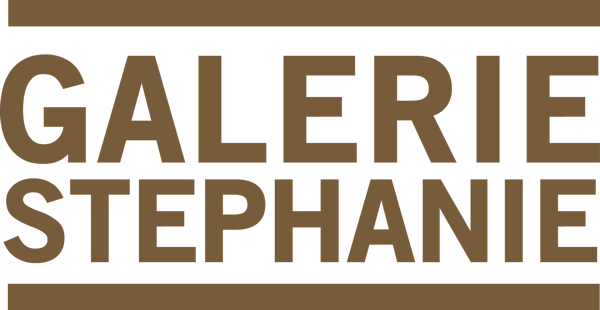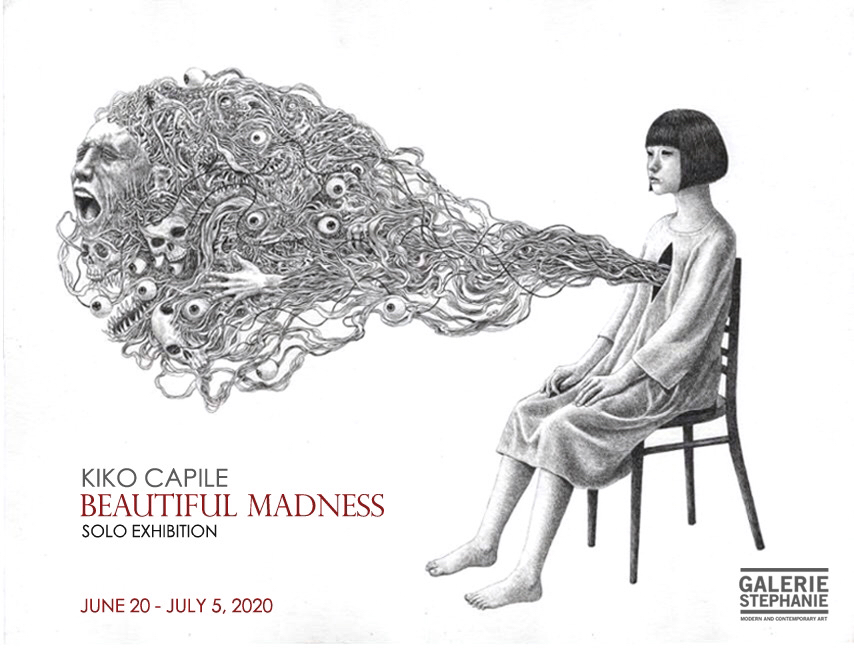The popular attribution of the color pink is to notions of femininity. In hospital maternity wards for instance, it is common for baby girls to be blanketed in pink. References to this color can thus become a vantage point to examine issues of femininity, feminism, and the female form.
It is fitting then that female artist Kara de Dios’ next exhibit is called “In the Pink.” A solo show at Galerie Stephanie, “In the Pink” features new illustrations and paintings of Kara de Dios that play with images of health and femininity, depicted through the self-portraiture that repeatedly figures into de Dios’s portfolio. De Dios’s art often deals with her relationship with the female body, working with various media to produce images and objects that are both whimsical and unsettling.
A visual artist and web designer, Kara de Dios graduated from the UP College of Fine Arts in 2008 with a degree in Visual Communication, awarded Juror’s Choice for Best Thesis–Publications Cluster. She has participated in a number of group exhibitions, the most recent being Art Fair Tokyo in 2015.
“I do speak a lot about women/myself and our relationships with our bodies,” says de Dios of the references behind “In the Pink.” “In the pink of health,” rises to the top of a more poetic mind, yet there’s that undeniable whiff of irreverence, followed by a wink and a nudge, that cannot be ignored in the strange, soupy world that this solo exhibition invites you into. This is, after all, the world of Kara de Dios’s boob-heads.
At first glance these are images of, in her words, “nubile-bodied girls”, yet the second and third looks they merit bring out the bizarre, the “pretty-but-weird” element that she has gotten used to hearing about when it comes to descriptions of her work. Yet, they are also comforting in their familiarity. De Dios names Egon Schiele and Frida Kahlo as influences, citing the simultaneous control and freedom that is expressed in their work, naming her fascination with Schiele’s gaunt, branch-like drawings of hands and Kahlo’s self-portraiture. Like Schiele and Kahlo, de Dios has a similar talent for illuminating the illness in what is commonly perceived as healthy. Besides these influences, one also sees the childlike irreverence of Yoshitomo Nara and Aya Takano – unsettling images of characters who know nothing and everything at once.
“I always felt that anything objectively and typically beautiful was boring,” she says of these sweet yet strange characters. Here, what appear to be mountains are actually “some dead giantess’ breasts” (as seen in Fresas, 2015) and strawberry vines sprout from butts. The softness of pink is given a razor-sharp edge by the fact of it also being the color of raw flesh and open wounds.
“Where there’s a wound, there’s a subject,” wrote Roland Barthes in “A Lover’s Discourse.” While the French semiotician’s work may seem out of place in speaking about an artist who admits to not being “a fan of overly-obfuscated meanings,” it sheds light on the nuances contained in Kara de Dios’s work, where she challenges viewers to see beauty in the ambiguous space between pretty and ugly, messy and clean. Beyond all of this, De Dios aims for work that is honest, that recognizes the body as more than a vessel for the brain. She writes, “In any piece of art that I look at, I try to look for honesty and humanity.”And as if describing her own work, she continues “I usually find it in how the artist touched and worked with their medium. I love seeing how the brush hairs lay and moved across the paper, a misplaced line that looks perfect where it is, or an errant colour that just works somehow.” That errant color in this series is pink: both the flushed shade of a healthy body and the glossy sheen of the tender bits sitting right under the skin.
External Links:


